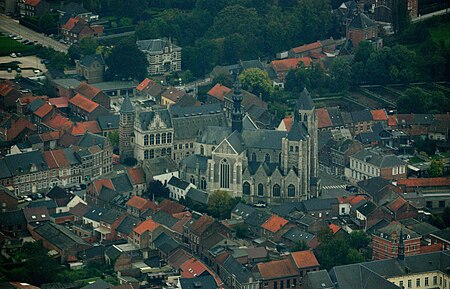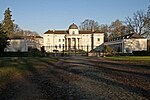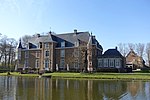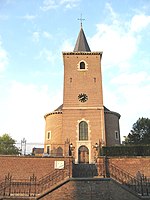Zoutleeuw
Flemish Brabant geography stubsMunicipalities of Flemish BrabantZoutleeuw

Zoutleeuw (Dutch pronunciation: [ˌzʌu̯tˈleːu] (listen); French: Léau [leo]) is a municipality and city in the Hageland, in the extreme east of the Belgian province of Flemish Brabant. On 1 January 2018 the municipality had 8,498 inhabitants. The total area is 46.73 km2, giving a population density of 182 inhabitants per km2. The name Leeuw means "lion", to which Zout ("salt") was added from the 16th century in recognition of the town's right to levy a salt tax. In 1999, UNESCO included the historical St. Leonard's Church as part of the World Heritage Site Belfries of Belgium and France.
Excerpt from the Wikipedia article Zoutleeuw (License: CC BY-SA 3.0, Authors, Images).Zoutleeuw
Paardenbrugstraat,
Geographical coordinates (GPS) Address Nearby Places Show on map
Geographical coordinates (GPS)
| Latitude | Longitude |
|---|---|
| N 50.833333333333 ° | E 5.1 ° |
Address
Paardenbrugstraat 2
3440 (Zoutleeuw)
Flemish Brabant, Belgium
Open on Google Maps










